Notice
Please be aware that Hestercombe will be closed on Christmas Day and Boxing Day, but will be open daily throughout the rest of the Christmas holidays.
Please be aware that Hestercombe will be closed on Christmas Day and Boxing Day, but will be open daily throughout the rest of the Christmas holidays.
Amongst other vestiges of its original destination that the chapel still contained was an antique altar. Before this the youthful pair knelt, with the moon shining in upon them in full lustre, through the gorgeous window, beneath which the altar was placed, and which, partly composed of stained glass, still in perfect preservation, not withstanding the hundreds of years that had rolled by since the erection of the building, threw a rich tinge of various hues upon the old banners, images, and entablatures, that were scattered throughout the place.
(Dalton, R.M., The Castle Chapel. A Romantic Tale, 3 vols. , p, 191.)
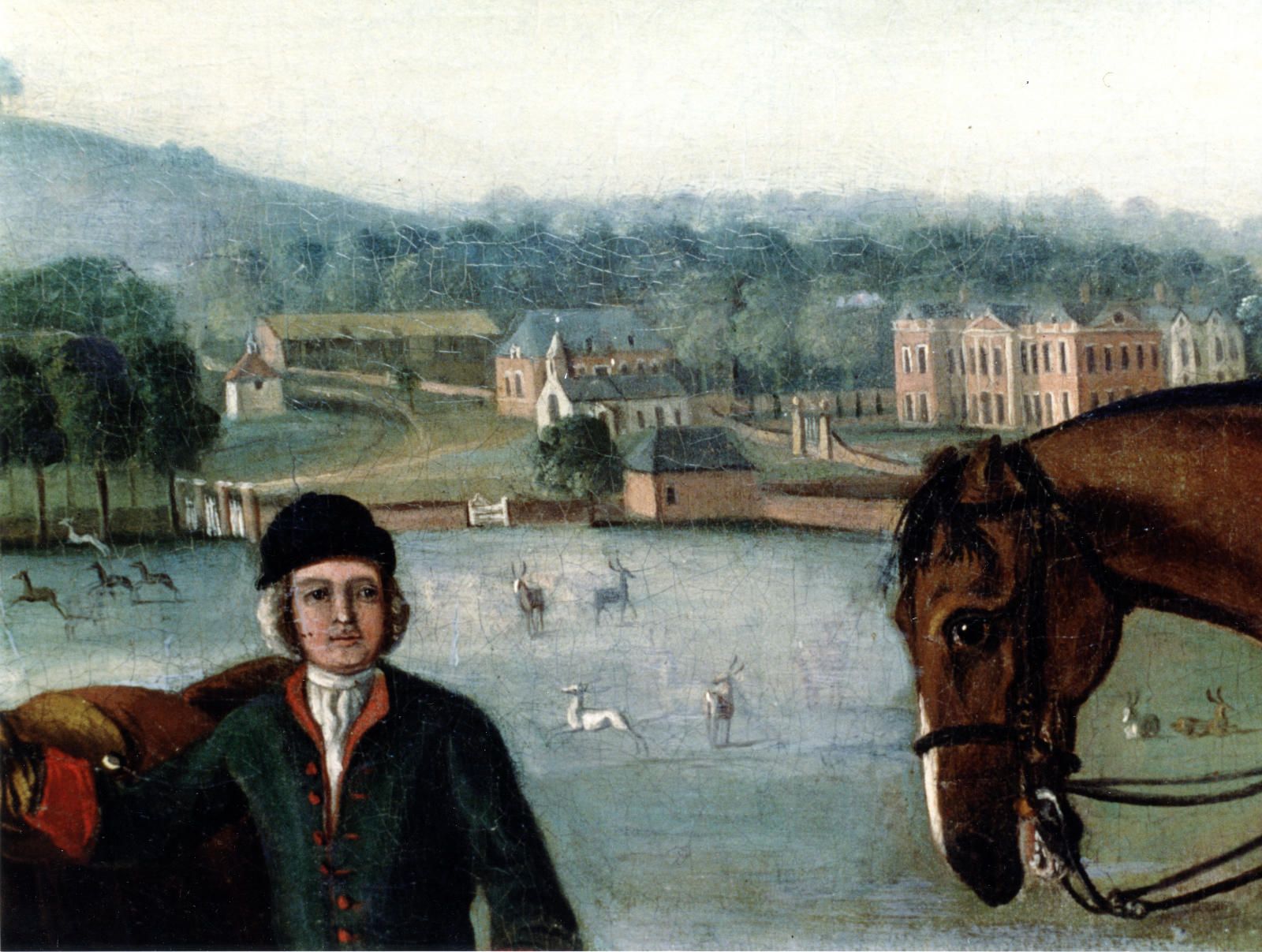 Fig. 1 - Detail from portrait of C. W. Bampfylde by J. Wootton c.1740 showing the Hestercombe House chapel background centre
Fig. 1 - Detail from portrait of C. W. Bampfylde by J. Wootton c.1740 showing the Hestercombe House chapel background centre
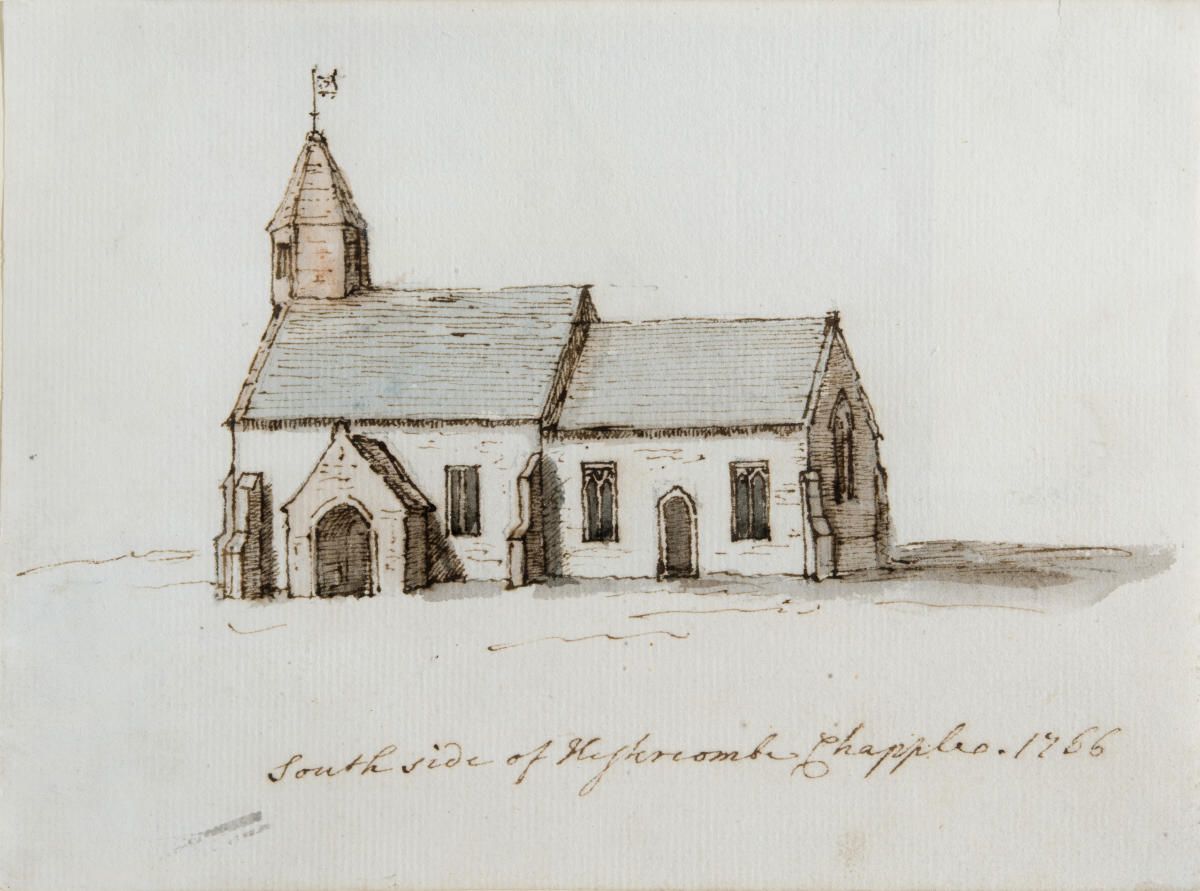 Fig. 8 - The 'Chapple at Hestercombe' 1766, watercolour by C. W. Bampfylde showing the south elevation
In July of 1316, court favourite and bishop of Bath and Wells, John de Drokenesford (also Droxford) (d.1329), granted a special warrant to the lord of Hestercombe, Sir John de Meriet (d.1327), for the celebration of mass and other divine observances in his presence and, most likely, at his expense. (Like most medieval chapels for which a licence was granted, the Hestercombe sanctuary was probably one of the “capella indotata”, reliant for its priest on the good offices of the reigning landowner.) Sir John, who was the first member of his family to live at Hestercombe, had built a gothic oratory for the convenience of a large household that included his second wife, Elizabeth Paynell (d.1344), daughter of Philip Paynell of Rampisham, Dorset. The parish church of Kingston St. Mary lay just two miles to the west, but was difficult to reach in winter when the simple roads of the district were apt to be almost impassable due to mud and flood-water incursions (as today). Cheddon Fitzpaine Church, which was comparatively close, would seem to have presented a solution was it not for the strict ecclesiastical law of the day which stipulated that one could only attend church in the parish of one’s abode.
Fig. 8 - The 'Chapple at Hestercombe' 1766, watercolour by C. W. Bampfylde showing the south elevation
In July of 1316, court favourite and bishop of Bath and Wells, John de Drokenesford (also Droxford) (d.1329), granted a special warrant to the lord of Hestercombe, Sir John de Meriet (d.1327), for the celebration of mass and other divine observances in his presence and, most likely, at his expense. (Like most medieval chapels for which a licence was granted, the Hestercombe sanctuary was probably one of the “capella indotata”, reliant for its priest on the good offices of the reigning landowner.) Sir John, who was the first member of his family to live at Hestercombe, had built a gothic oratory for the convenience of a large household that included his second wife, Elizabeth Paynell (d.1344), daughter of Philip Paynell of Rampisham, Dorset. The parish church of Kingston St. Mary lay just two miles to the west, but was difficult to reach in winter when the simple roads of the district were apt to be almost impassable due to mud and flood-water incursions (as today). Cheddon Fitzpaine Church, which was comparatively close, would seem to have presented a solution was it not for the strict ecclesiastical law of the day which stipulated that one could only attend church in the parish of one’s abode.
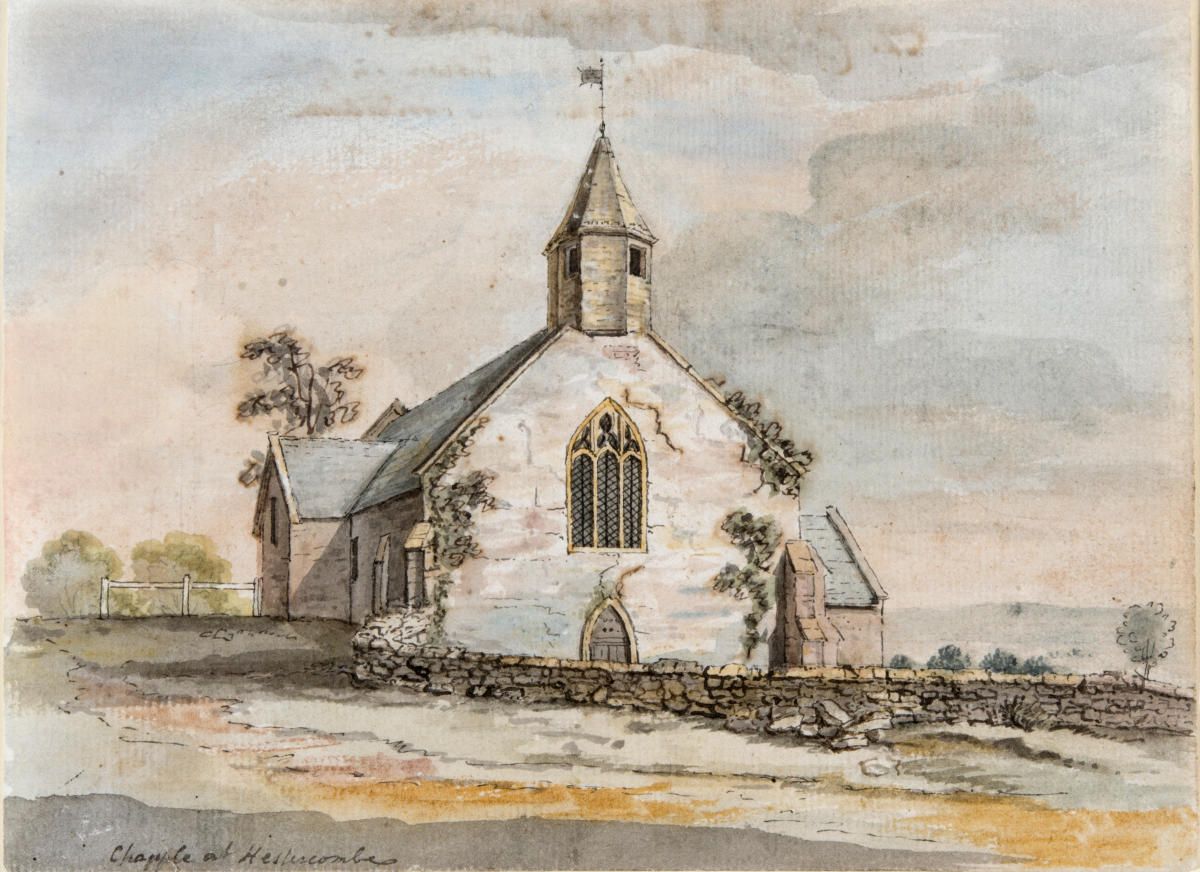 Fig. 9 - The 'Chapple at Hestercombe' 1766, watercolour by C. W. Bampfylde showing the west elevation
The Hestercombe chapel was constructed during the reign of Edward II (1307-27), a period in which the Decorated or Geometrical style of church building held sway. Simplicity of appearance was widespread, but ornamentation became ever richer with the appearance of elegant geometrical tracery (stone mouldings within a window), vaulted interiors, spires, stone carving, painted and gilded stonework, and larger and wider windows with stained glass. The Hestercombe chapel appears to have incorporated a nave and chancel, a large west-facing window with reticulated tracery (circles forming a lattice of ogee shapes) that was divided by mullions into three lights (vertical sections), and a bell turret on the west gable. A modest construction, it seems to have been covered with a light-coloured plaster or render, as depicted in the background of a portrait of C. W. Bampfylde (1720-91) by John Wootton c.1740 (Fig. 1). The building was entered through a portal in the west façade, with a smaller door, identified by a porch, situated on the south front. Decorative elements in the interior may well have consisted of wall paintings, textiles and tapestries illustrating biblical scenes, as well as statuary, an altar, and liturgical paraphernalia (i.e., books, flagons, chalices, patens, crucifixes etc.). Significantly, Sir John’s chapel also incorporated a chantry where private masses were performed for his soul and others nominated by him in his will, both living and dead.
According to a paper presented to the membership of the Somerset Archaeological and Natural History Society in September of 1872 by noted local antiquary, the Revd. Thomas Hugo (1820-1876), the de Meriets held Hestercombe until about 1391. Following Sir John de Meriet’s death in 1327, it passed first through the hands of his son, John, and then to his grandson, Walter (d. 1345), who dying without issue left Hestercombe to his cousin, another Walter. This Walter also died without issue and was succeeded by a nephew, Sir Simon de Meriet (d. c.1357). It is known that a licence to celebrate masses in the Hestercombe chapel was issued to Sir Simon by bishop Ralph de Salopia (Shrewsbury) (c.1286-1363), who had succeeded John de Drokenesford in June of 1329. De Salopia, a diligent cleric and dedicated builder – the moat and walls of the Bishop’s Palace at Wells were added during a productive thirty-four year term -- issued his proclamation at Wiveliscombe in March of 1355. Unlike its forerunner, the chapel grant, which was generally issued in perpetuity to the grantee and his successors, the 14th century licencie celebrandi was temporary in duration, ranging from as little as one year to the somewhat uncertain ‘pleasure’ of the bishop. Sir Simon de Meriet’s licence was exceptionally brief, lasting from 17 March 1355 until 29 September 1355 (Michaelmas), a period of only 6 months and 13 days. It may have been a special class of licence or temporary privilege, as for instance to sanction a celebration of marriage or to employ clergy normally attached to a benefice.
Fig. 9 - The 'Chapple at Hestercombe' 1766, watercolour by C. W. Bampfylde showing the west elevation
The Hestercombe chapel was constructed during the reign of Edward II (1307-27), a period in which the Decorated or Geometrical style of church building held sway. Simplicity of appearance was widespread, but ornamentation became ever richer with the appearance of elegant geometrical tracery (stone mouldings within a window), vaulted interiors, spires, stone carving, painted and gilded stonework, and larger and wider windows with stained glass. The Hestercombe chapel appears to have incorporated a nave and chancel, a large west-facing window with reticulated tracery (circles forming a lattice of ogee shapes) that was divided by mullions into three lights (vertical sections), and a bell turret on the west gable. A modest construction, it seems to have been covered with a light-coloured plaster or render, as depicted in the background of a portrait of C. W. Bampfylde (1720-91) by John Wootton c.1740 (Fig. 1). The building was entered through a portal in the west façade, with a smaller door, identified by a porch, situated on the south front. Decorative elements in the interior may well have consisted of wall paintings, textiles and tapestries illustrating biblical scenes, as well as statuary, an altar, and liturgical paraphernalia (i.e., books, flagons, chalices, patens, crucifixes etc.). Significantly, Sir John’s chapel also incorporated a chantry where private masses were performed for his soul and others nominated by him in his will, both living and dead.
According to a paper presented to the membership of the Somerset Archaeological and Natural History Society in September of 1872 by noted local antiquary, the Revd. Thomas Hugo (1820-1876), the de Meriets held Hestercombe until about 1391. Following Sir John de Meriet’s death in 1327, it passed first through the hands of his son, John, and then to his grandson, Walter (d. 1345), who dying without issue left Hestercombe to his cousin, another Walter. This Walter also died without issue and was succeeded by a nephew, Sir Simon de Meriet (d. c.1357). It is known that a licence to celebrate masses in the Hestercombe chapel was issued to Sir Simon by bishop Ralph de Salopia (Shrewsbury) (c.1286-1363), who had succeeded John de Drokenesford in June of 1329. De Salopia, a diligent cleric and dedicated builder – the moat and walls of the Bishop’s Palace at Wells were added during a productive thirty-four year term -- issued his proclamation at Wiveliscombe in March of 1355. Unlike its forerunner, the chapel grant, which was generally issued in perpetuity to the grantee and his successors, the 14th century licencie celebrandi was temporary in duration, ranging from as little as one year to the somewhat uncertain ‘pleasure’ of the bishop. Sir Simon de Meriet’s licence was exceptionally brief, lasting from 17 March 1355 until 29 September 1355 (Michaelmas), a period of only 6 months and 13 days. It may have been a special class of licence or temporary privilege, as for instance to sanction a celebration of marriage or to employ clergy normally attached to a benefice.
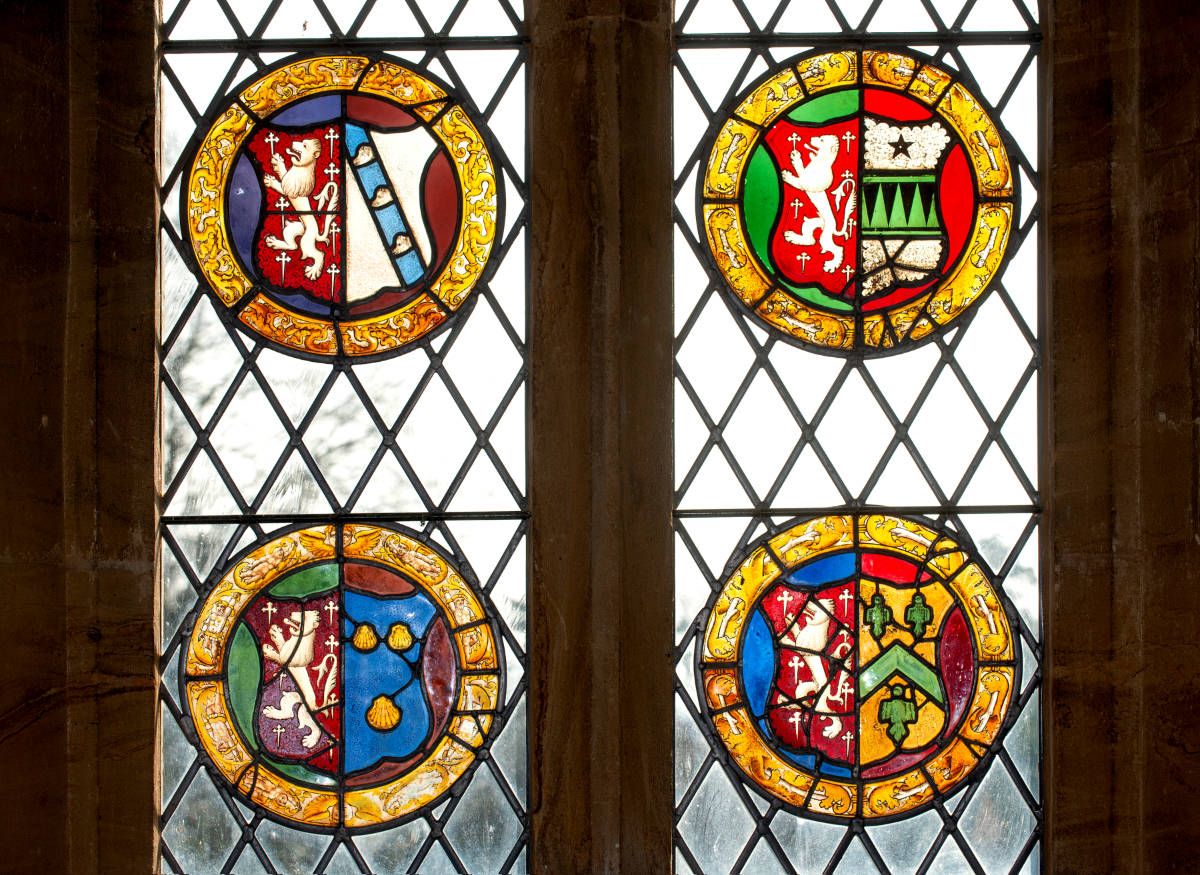 Fig. 2 - The four surviving Hestecombe chapel shields in the easternmost window of the south isle, Kingston St Mary church
Hestercombe passed into the hands of the Warre family when John la Warre married Elizabeth Meriet, only daughter and heir of Sir John Meriet, in the reign of Edward III (1327-77). According to the noted Somerset historian, the Revd. John Collinson (History and Antiquities of Somerset, 1791), a descendant of John la Warre, Richard Warre (d. 1485), who married Joanna daughter of John Stourton, 1st Baron Stourton of Stourton, Wilts, and served as High Sheriff of Somerset, set about repairing and decorating the chapel sometime after he inherited the property from his father, Robert Warre, in 1465. The inscription Orate pro anima Roberti Warre, armigeri, Domini de Hestercombe (Pray for the soul of Robert Warre, esquire, owner of Hestercombe) was painted on the glass in the east window of the chapel along with a figure of Christ on the cross flanked by figures of the Blessed Virgin Mary and overtime St. John the Evangelist. Shields of arms showing Warre alliances were also introduced such that by 1791 Collinson could record the armorial bearings of no less than twenty-one families with whom the Warres had intermarried since 1269. The array of heraldic colours that decorated the shields, each of which was described in Collinson’s History in precise heraldic terms, comprised gules (red), argent (white or silver), or (yellow or gold), sable (black), azure (blue) and vert (green). The Warre version was thus: Gules (red), crusuly fitchee (crosses with pointed bottoms), a lion rampant (lion standing on its hind legs) argent (silver).
Fig. 2 - The four surviving Hestecombe chapel shields in the easternmost window of the south isle, Kingston St Mary church
Hestercombe passed into the hands of the Warre family when John la Warre married Elizabeth Meriet, only daughter and heir of Sir John Meriet, in the reign of Edward III (1327-77). According to the noted Somerset historian, the Revd. John Collinson (History and Antiquities of Somerset, 1791), a descendant of John la Warre, Richard Warre (d. 1485), who married Joanna daughter of John Stourton, 1st Baron Stourton of Stourton, Wilts, and served as High Sheriff of Somerset, set about repairing and decorating the chapel sometime after he inherited the property from his father, Robert Warre, in 1465. The inscription Orate pro anima Roberti Warre, armigeri, Domini de Hestercombe (Pray for the soul of Robert Warre, esquire, owner of Hestercombe) was painted on the glass in the east window of the chapel along with a figure of Christ on the cross flanked by figures of the Blessed Virgin Mary and overtime St. John the Evangelist. Shields of arms showing Warre alliances were also introduced such that by 1791 Collinson could record the armorial bearings of no less than twenty-one families with whom the Warres had intermarried since 1269. The array of heraldic colours that decorated the shields, each of which was described in Collinson’s History in precise heraldic terms, comprised gules (red), argent (white or silver), or (yellow or gold), sable (black), azure (blue) and vert (green). The Warre version was thus: Gules (red), crusuly fitchee (crosses with pointed bottoms), a lion rampant (lion standing on its hind legs) argent (silver).
1. Warre: Gules, crusuly fitchee, a lion rampant argent. 2. Kentisbere: Gules, a pair of wings conjoined argent, debruised (surmounted) by a bend azure. 3. Meriet: Barry of six or and Sable, a bend ermine. 4. Percehaye: Argent, a cross Moline gules. 5. Clavile: Or, three keys gules. 6. Stourton: Sable, a bend or between six fountains proper. 7. Chipleigh: Azure, a chevron (broad inverted V-shape) between three stags’ heads cabossed or. 8. Mawbank: Argent, four bars wavy gules, over all a saltire (diagonal cross) or. 9. Hody: Argent, a sesse indented paly vert and Sable, cotised of the first, within a bordure engrailed of the second, in chief a mullet Sable. 10. Malet: Azure, three escallop-shells or. 11. Blewet: Or, a chevron between three eagles displayed, vert. 12. Popham: Argent, on a chief gules, two stags’ heads cabossed or; crescent for distinction. 13. St. Barbe: Checquy (chequered pattern) argent and sable. 14. Wyndham: Azure, a chevron between three lions’ heads erased or. 15. Brokesby: Argent, on a bend azure, three boars’ heads of the first. 16. Desmond: Ermine, a saltier engrailed gules. 17. Argent, a bend nebule cotised sable. 18. Azure, three leopards’ heads cabossed or. 19. Hawley: Vert, a saltier engrailed argent. 20. Cuffe: Argent, on a bend dauncettee Sable, cotised azure bezantee, three fleurs-de-lis of the field. 21. Harbin: Azure, a saltier voided between four spears or.
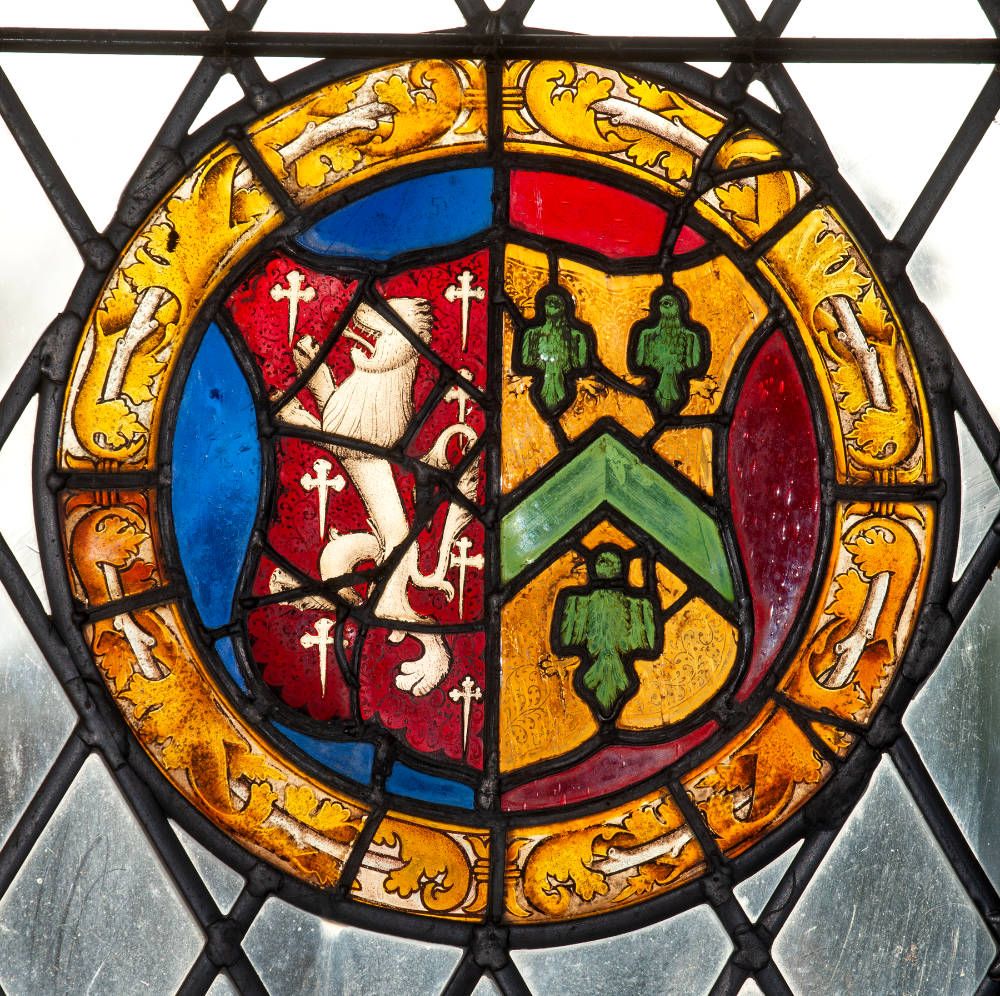 Fig. 3 - The arms of Warre allied with Bluet (Blewett), Kingston St Mary church
Fig. 3 - The arms of Warre allied with Bluet (Blewett), Kingston St Mary church
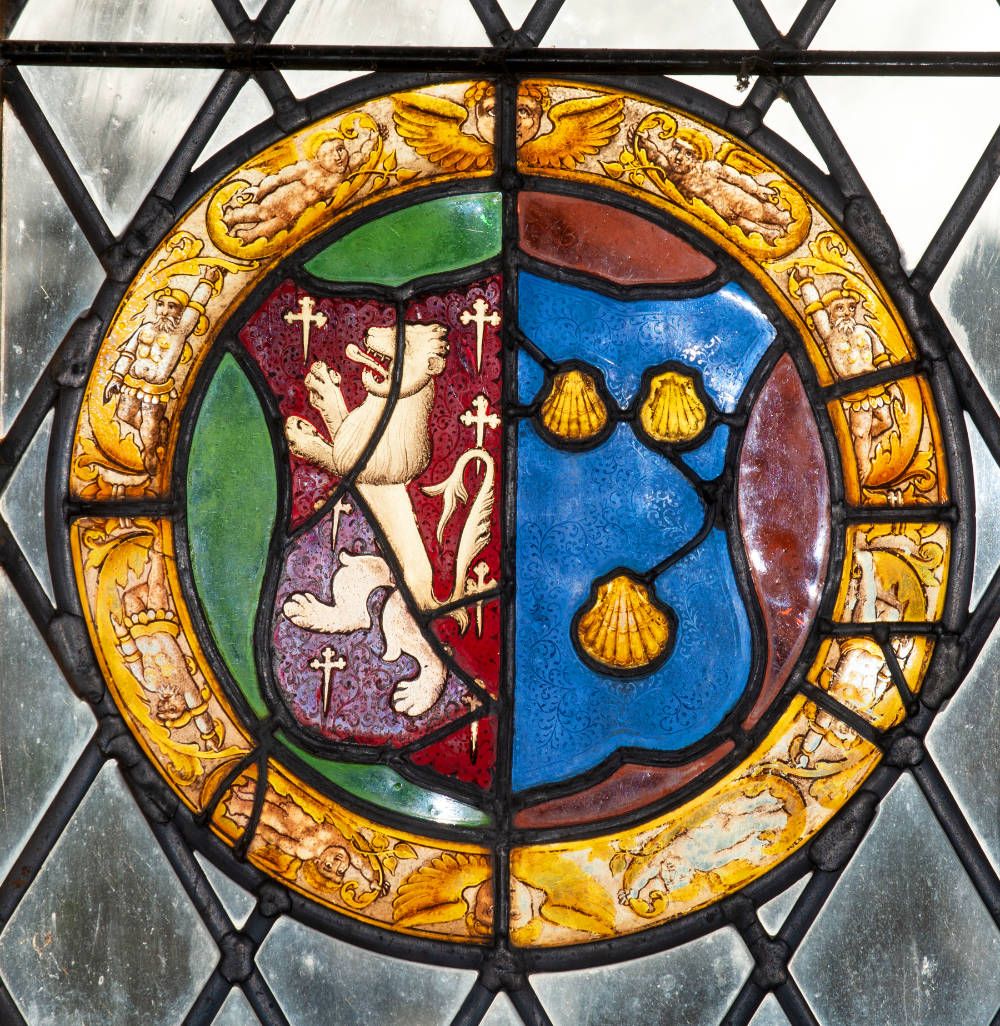 Fig. 4 -- The arms of Warre allied with Malet, Kingston St Mary church
Fig. 4 -- The arms of Warre allied with Malet, Kingston St Mary church
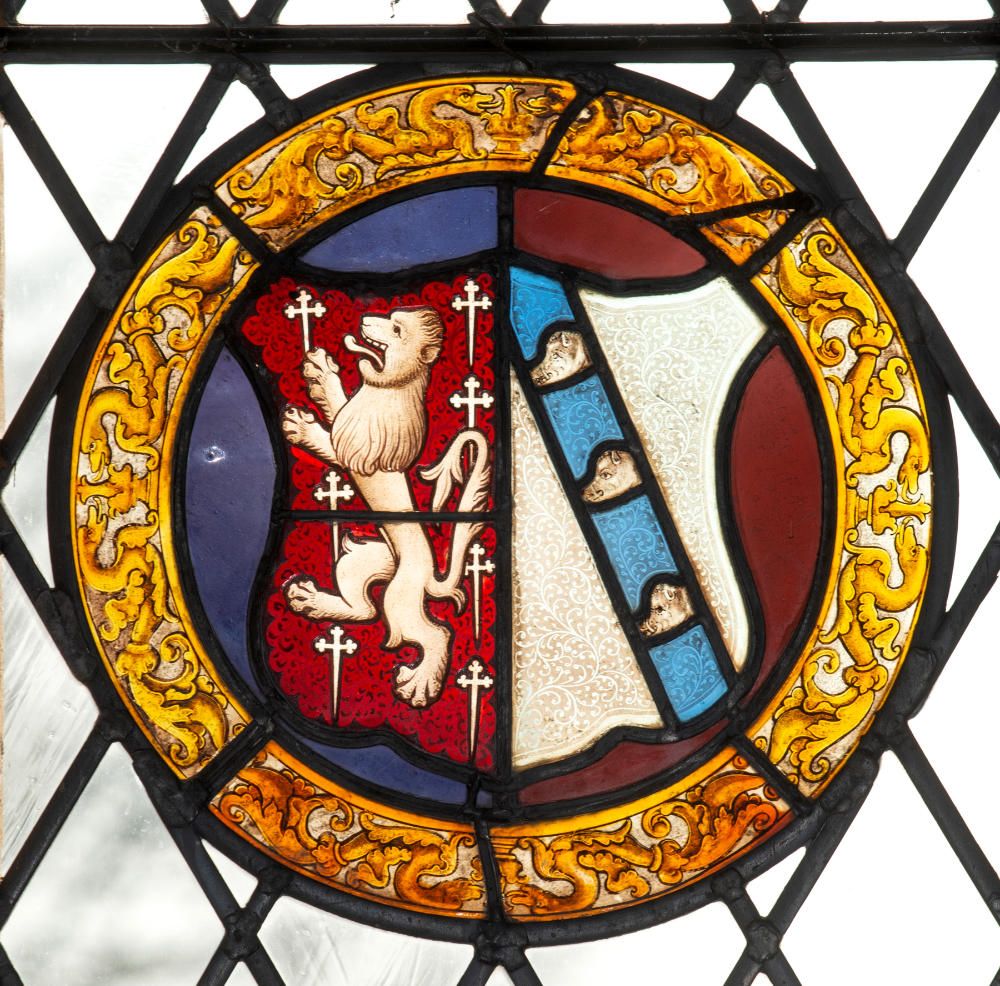 Fig. 5 - The arms of Warre allied with a family yet to be identified, Kingston St Mary church
Fig. 5 - The arms of Warre allied with a family yet to be identified, Kingston St Mary church
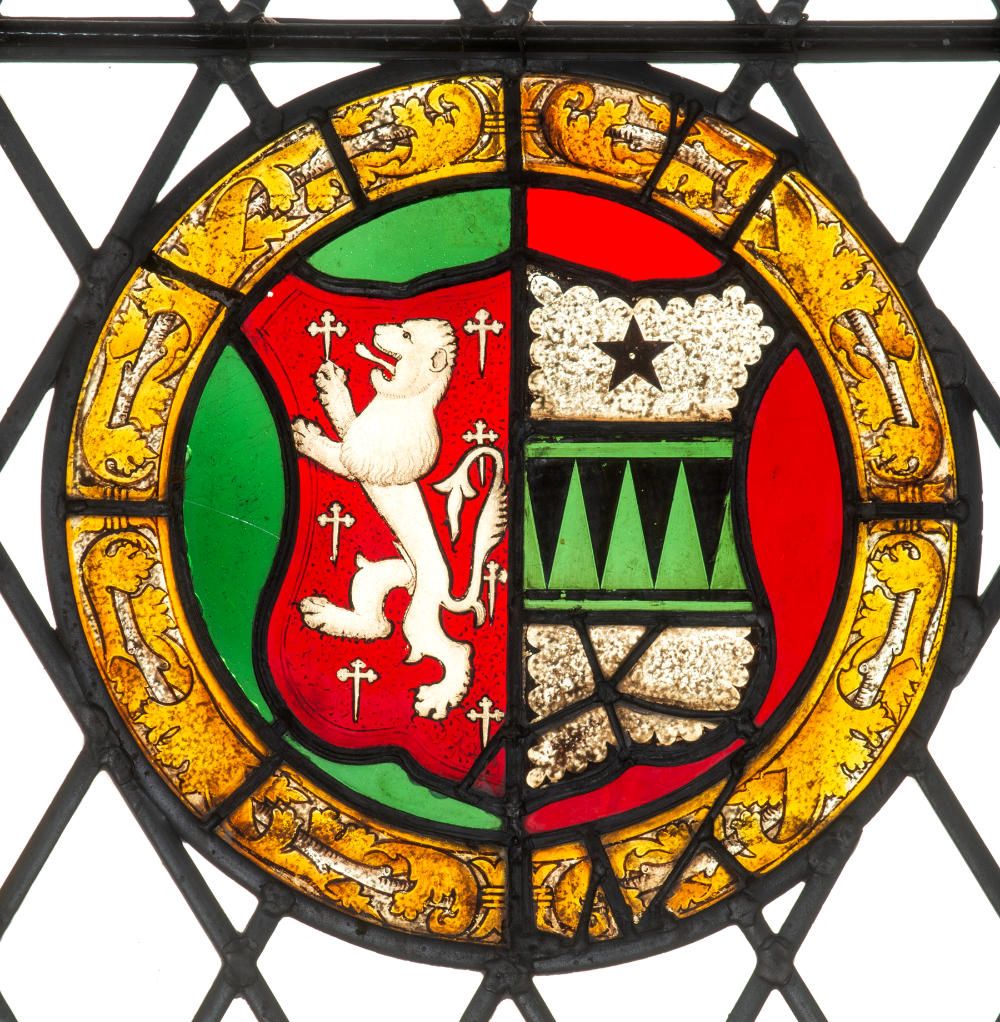 Fig. 6 - The arms of Warre allied with Hody, Kingston St Mary church
Fig. 6 - The arms of Warre allied with Hody, Kingston St Mary church
Four of the twenty-one shields of arms in Collinson’s series can still be seen in the Church of St. Mary, Kingston Saint Mary, in the easternmost window in the south wall of the south aisle next to the Warre tomb. The fate of the remaining seventeen is not known. Set against a vibrant patchwork of green, blue, red, purple, lilac and salmon coloured glass and framed by elaborate borders of gold foliage interlaced with grey branch work, the surviving shields refer to families with which the Warre’s formed alliances between 1535 and 1602: Malet, Hody, Bluett (Blewett), and Argent, on a bend azure three boars’ heads of the first, as yet unidentified (Figs 2-6). They were apparently relocated to the parish church and repaired sometime after the Hestercombe chapel was pulled down by C. W. Bampfylde in about 1766 -- it was allegedly in a ‘ruinous condition’ – and 1872. What happened to the shields in the intervening years is not entirely clear. In his The Parish Church of Kingston St Mary (1980), H. F. Ellis maintains that the four shields of arms were brought from Hestercombe to the Church of St Mary, Kingston Saint Mary, towards the end of the 18th century. Christopher Woodforde (Stained Glass in Somerset 1250-1830, 1946) writes that they were probably taken to Hestercombe House after the chapel was demolished, then placed in their present location before 1872, when they were observed by a member of the Somerset Archaeological and Natural History Society, J. H. Parker, and after 1853, when the window was described in detail but with no mention of the glass. Many alterations to the Church of St. Mary were carried out in the 19th century and it is even possible that the shields of Malet, Hody, Bluett (Blewett), and Argent, on a bend azure three boars’ heads of the first were removed from the Church for repair before 1853. The original date of the glass in the Church of St Mary is also a matter of some debate. Experts only agree that the shields are not ‘ancient’ (medieval), that they were painted at the same time, and that they must have been conceived sometime before Collinson published his History in 1791. Christopher Woodforde posits that the answer may lie with Sir Francis Warre (1659-1718) and his brother-in-law, the Revd. George Harbin (c.1665-1744). Collinson’s sequence ends with the arms of Warre paired with those of Cuffe and Harbin, marriages involving Sir Francis Warre that took place in 1676 and 1692. (Sir Francis Warre married, firstly Anne Cuffe and, secondly Margaret Harbin ). Sir Francis and Margaret Harbin, both of whom were intrigued by the old and the rare, oversaw the refurbishment of the Hestercombe chapel in the early 1700s. Together with their close friend and relation, George Harbin, also a dedicated antiquarian, it is not unreasonable to suppose that they took this opportunity to create part of the Collinson series of shields based on old designs sometime after 1692 and before Sir Francis’ death in 1718. Still, at least part of the series in Collinson’s History must have been devised by others. A written note in George Harbin’s hand that lies amongst the Hestercombe papers in the Somerset Heritage Centre waxes lyrical about ‘all ye old Arms of the Family in the Chapell Windows at Hestercombe wch are as Antient (Ancient) at least as the beginning of K. Edward ye IVth’s reign (1461)’.The statement that it was ruinous can hardly be accurate. It was built at a period when English architecture was at its best, and, as we have also seen, had been restored and re-decorated in the latter part of the fifteenth century. But its real excellence, its Gothic peculiarities, opposed to the taste of his day, was the cause, I am sorry to think, of its unhappy removal. [Rev. T. Hugo, 'Hestercombe', Somersetshire Archaeological and Natural History Society's Proceedings, vol 18 (Sept 1872), p.166.]
Mrs Warre has just shown me a photo of Morley’s of an old picture of Hestercombe House as it was in the time of Sir Francis Warre. It shows . . . the old Chapel, which was larger than such Chapels usually were as I believe unusual privileges were attached to it. (Correspondence between the Revd John Warre and Mrs Druce 1878-1879 quoted in ‘Chronicles of the Warres 1879’)
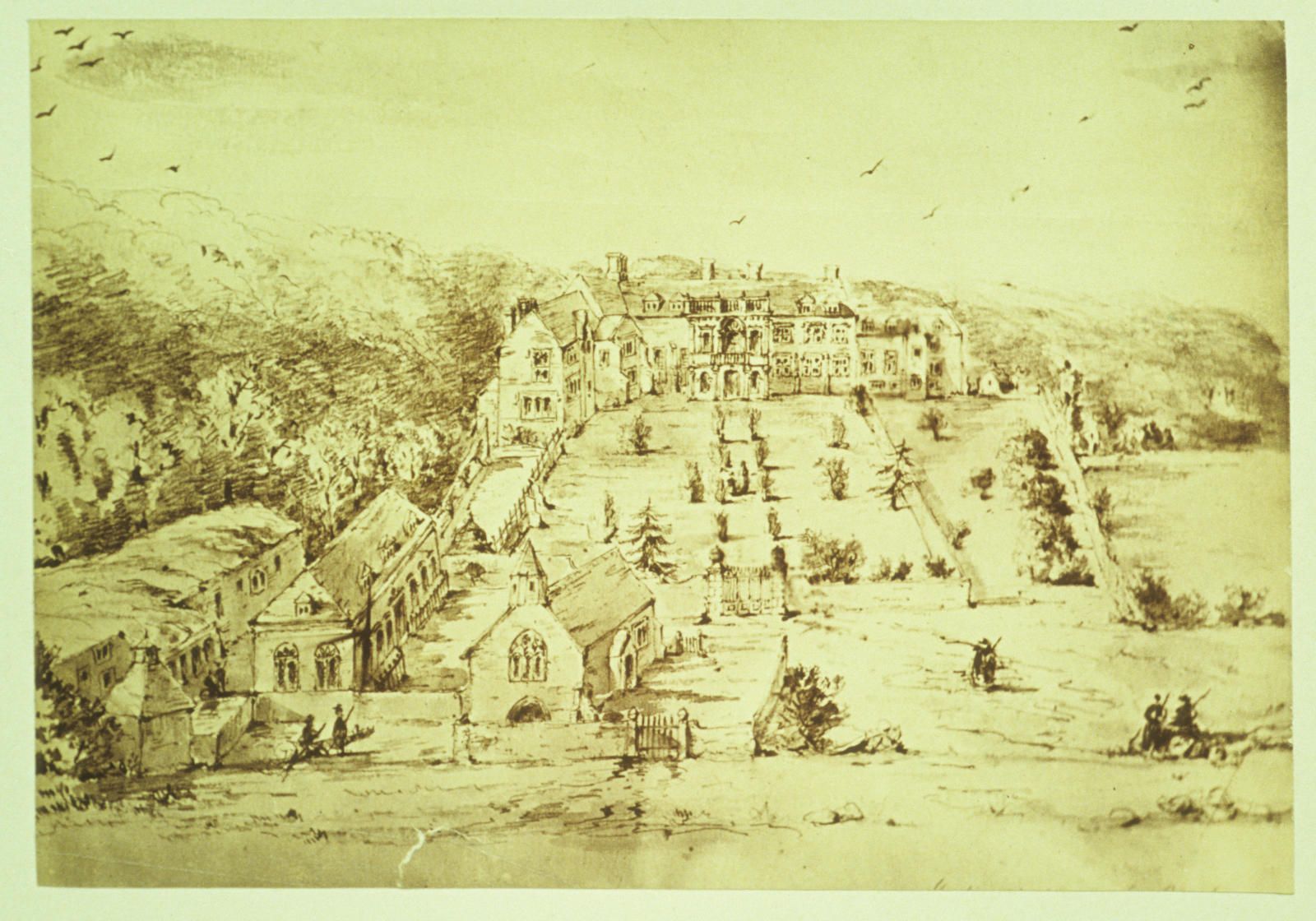 Fig. 7 - Hestercombe chapel as depicted in the foreground of a sketch based on the painting, 'Hestercombe 1700'
The earliest and most detailed image that we have of the Hestercombe chapel is the great oil painting, ‘Hestercombe 1700’ (Fig. 7), a mammoth creation which hung in the Great Hall for many years and measured 6 ft. 6 in. x 3 ft. 2 ½ in. (2 m x 1 m). Purchased in October 1872 by the learned Taunton antiquary, the Revd. Thomas Hugo, at an auction held to dispose of the contents of Hestercombe House following the death of the last of the Warres, Miss Elizabeth Maria Tyndale-Warre, the painting shows the private chapel of the Warres set within a gated and walled green enclosure to the west of the manor-house alongside the Estate’s 17th century orangery. A tree-lined avenue links House and chapel. Sir Francis Warre (1659-1718) is believed to have renovated the chapel shortly after this canvas was completed, possibly to include an extension (side chapel?) on the east front. This is apparent in one of the two 18th century watercolour paintings of the ‘Chapple at Hestercombe’ that survive (Figs. 8-9). Among those of the Warre line who were later wedded in the little church was Margaret Warre (1694-1758), only daughter and heiress of Sir Francis, who married John Bampfylde (1690-1750) of Warleigh, Devon, on 18 October 1718; and Margaretta Bampfylde (1722-1793), second daughter of John and Margaret Bampfylde, who married George Tyndale (1704-1771), son and heir of Thomas and Elizabeth Tyndale of Bathford, on 31 December 1753.
Fig. 7 - Hestercombe chapel as depicted in the foreground of a sketch based on the painting, 'Hestercombe 1700'
The earliest and most detailed image that we have of the Hestercombe chapel is the great oil painting, ‘Hestercombe 1700’ (Fig. 7), a mammoth creation which hung in the Great Hall for many years and measured 6 ft. 6 in. x 3 ft. 2 ½ in. (2 m x 1 m). Purchased in October 1872 by the learned Taunton antiquary, the Revd. Thomas Hugo, at an auction held to dispose of the contents of Hestercombe House following the death of the last of the Warres, Miss Elizabeth Maria Tyndale-Warre, the painting shows the private chapel of the Warres set within a gated and walled green enclosure to the west of the manor-house alongside the Estate’s 17th century orangery. A tree-lined avenue links House and chapel. Sir Francis Warre (1659-1718) is believed to have renovated the chapel shortly after this canvas was completed, possibly to include an extension (side chapel?) on the east front. This is apparent in one of the two 18th century watercolour paintings of the ‘Chapple at Hestercombe’ that survive (Figs. 8-9). Among those of the Warre line who were later wedded in the little church was Margaret Warre (1694-1758), only daughter and heiress of Sir Francis, who married John Bampfylde (1690-1750) of Warleigh, Devon, on 18 October 1718; and Margaretta Bampfylde (1722-1793), second daughter of John and Margaret Bampfylde, who married George Tyndale (1704-1771), son and heir of Thomas and Elizabeth Tyndale of Bathford, on 31 December 1753.
